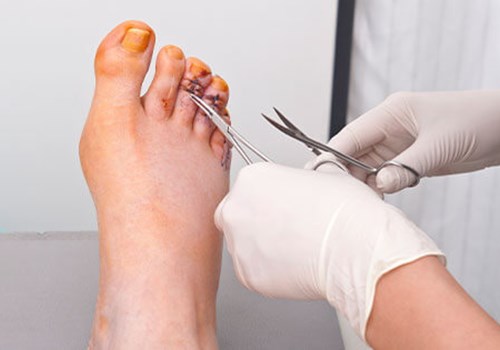When it comes to mobility and independence, nothing beats the importance of healthy feet. However, the reality is that our feet are susceptible to a variety of ailments, often necessitating surgical intervention. Whether it’s an athlete suffering from a severe sprain or an elderly individual dealing with the pain of arthritis, foot surgeries have emerged as a commonplace solution.
This article delves into some of the most common types of foot surgeries, aiming to provide you with critical insights about their specific processes and the subsequent journey to recovery. Read on.
Bunion Surgery
A bunion is a bony bump that forms at the base of the big toe, causing it to deviate towards the other toes. Bunion surgery realigns the bones in the foot and corrects any deformities. This procedure usually involves making an incision on the side of the foot and adjusting bone and soft tissue.
After bunion surgery, the foot may be immobilized with a cast or special shoe. Patients should avoid putting weight on the foot for weeks and elevate it when possible. Physical therapy may be recommended to improve mobility and strengthen the foot.
Hammertoe Surgery
Hammertoe is a condition where one or more toes are bent downward, resembling a hammer. This can cause discomfort and difficulty walking. Hammertoe surgery straightens the affected toe(s) and relieves pain.
After hammertoe surgery, patients may require special shoes or splints to keep the toes straight during healing. Elevating the foot and undergoing physical therapy may enhance mobility and strength.
Heel Spur Surgery
Heel spurs are bony protrusions that form on the heel bone, causing pain and discomfort. This condition is often associated with plantar fasciitis, a common foot problem. Heel spur surgery by a foot doctor involves removing the bony growth to relieve pressure and pain in the heel.
After heel spur surgery, patients should rest and avoid putting weight on the affected foot for a few weeks. Physical therapy may be recommended to aid in healing and strengthening the foot.
Plantar Fasciitis Surgery
Plantar fasciitis is a common cause of heel pain, resulting from inflammation of the plantar fascia, a band of tissue that runs along the bottom of the foot. If conservative treatments are not effective, surgery may be recommended to release tension in the plantar fascia and relieve pain.
After plantar fasciitis surgery, patients may wear a cast or splint for weeks to immobilize the foot. Physical therapy may also be recommended to improve foot mobility and strength.
Achilles Tendon Surgery
The Achilles tendon connects the calf muscles to the heel bone. It can get inflamed or torn, causing pain and difficulty walking. Surgery may be necessary to repair a tear or remove damaged tissue.
Patients may require crutches or a walking boot for weeks to avoid putting weight on the affected foot. Physical therapy is vital for strengthening and stretching the tendon.
Learning All About the Common Types of Foot Surgeries and Recovery Processes
Foot surgeries can greatly improve the quality of life for those suffering from foot problems. However, it is important to carefully follow the recovery process recommended by your surgical podiatrist to ensure successful healing and long-term results.
If you are experiencing foot pain or discomfort, consult with an orthopedic surgeon to determine the best treatment plan for your specific condition. So, be careful and take good care of your feet, they are the foundation of your body after all.
Don’t stop exploring here! We have a plethora of other informative articles covering various topics on our blog.






Add comment